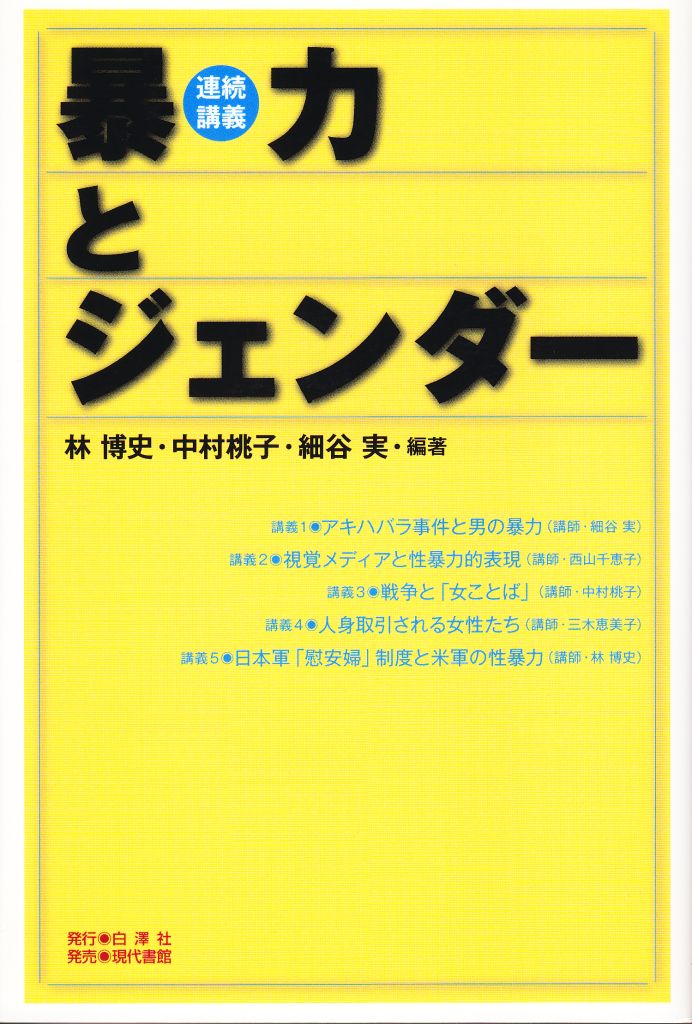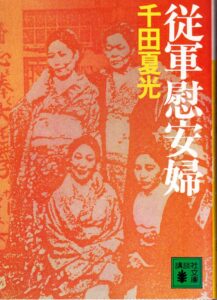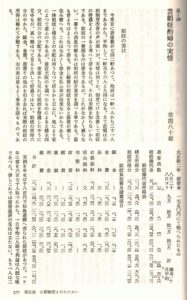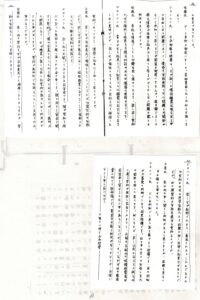There are those who claim that Japan should not be singled out for wrongdoing, as the armed forces of other nations are also known to have established facilities similar to the Japanese military comfort stations. Let us have a look at this assertion and at what sets the Japanese system apart from those in other countries.
First, usually the purpose of such as system is to prevent soldiers from being infected with sexually transmitted diseases, as the women are given STD examinations (whether this is effective or not is another matter). In the case of the Japanese military however, the origin of introducing the comfort women system is to be found in its history of brutally raping local Chinese women. And in fact, rapes didn’t decrease as comfort stations were established, they increased. Since comfort stations weren’t sufficiently established on the front lines, the smallest units mimicked the practice, abducting women and making their own pseudo comfort stations to imprison and rape women. And since it cost a lot of money to go to comfort stations but no money to rape, they became a principal factor in the promotion of rape.
Second, another aspect that made the Japanese system very different from most others was that the entire process was either performed directly by the military, or under its authority. This included the planning of the establishment of comfort stations (decision on the location and required number of people), the selecting, approaching, and funding arrangements of station operators (the military sometimes operated them directly without operators), the enlistment of women (the police cooperated with them and identification cards were issued in Korea, Taiwan and Mainland Japan. The military performed or helped in enlisting directly or indirectly in occupied areas), transportation of women (providing military ships and trucks) and management of comfort stations (the military operated them directly, or the military enacted control regulations and operators were commissioned to operate them under the control of the military) and provision of buildings, materials and commodities (the military engineer units sometimes constructed comfort station buildings). Aside from Nazi Germany, putting such a system under the complete control of the military is unimaginable.
When we look at the armed forces of other nations, including those of the U.S., we find a practice of nearby women being rounded up in a form of organized prostitution. But in these cases, it isn’t the U.S. military that does the enlisting, and there isn’t a system by which a certain number of women are procured based on a certain number of U.S. soldiers. The U.S. military is known to have an abundance of commodities and food, so people in the battlefield are drawn to it. This cannot be described to be “run” by the U.S. military, and is hence different from the case of Japan.
*For a comparison of the practices of the U.S. and Japanese militaries, please see Hayashi Hirofumi’s fifth chapter in Renzoku kogi: boryoku to jenda (“Course of Lectures: Violence and Gender”, Edited and Written by Hayashi Hirofumi, Nakamura Momoko and Hosoya Makoto, Publ: Hakutakusha, 2009)
Third, whenever citizens back home in the U.S. discover the military has approved the use of brothels, protests by churches, lawmakers and others cause military officials to take immediate measures in having them shut down. U.S. public opinion is against them. There are cases in which a local unit somewhere in the world has allowed the existence of a brothel, only for a soldier to write an angry letter to the pastor of his or her hometown church. The pastor brings the letter to a member of Congress, who subsequently criticizes the military. Next, the military declares that such things are completely unacceptable, immediately issuing orders for the brothel to be shut down and/or placed off-limits. Or a chaplain will express his / her outrage.
Therefore, in the case of the U.S., military policy is sharply monitored by society. Criticism has to be taken into account, whether in the form of public opinion at home, that of lawmakers, their local supporters or churches. This is considerably different from the case of the Japanese military. We might also say that this is the difference between a democracy and a dictatorship.
The Japanese military, for its part, openly established and operated comfort stations. The Army’s Yasen shuho kitei (“Battlefield Canteen Regulations”) were revised immediately after the Second Sino-Japanese War began, and it became possible to establish “necessary recreation facilities” in the battlefield canteens where soldiers bought daily commodities, food and drink. In other words, the military openly established and operated comfort stations.
What we have shown so far is that during World War II only the Japanese and German militaries (including the Nazi Schutzstaffel or SS) systematically established and used military comfort stations.
Incidentally, during the Korean War, the South Korean military established comfort stations similar to those of the Japanese military, while the government of South Korea also provided U.S. forces with comfort stations. Many South Korean officers had once belonged to the Japanese military or the Manchurian military, which was under the command of the Japanese military, and they were imitating the practices of the organization to which they had once belonged. Indeed these comfort stations themselves represent grave human rights violations worthy of criticism, but they are not a reasonable example in justifying the Japanese military’s comfort women system. Instead there should be a reflection on the fact that this negative custom (crime) of the Japanese military was passed on to the military of South Korea.
Shown is a Taiwan Development Company document related to Navy comfort stations in Hainan Island. After occupying Hainan Island in 1939, a plan to establish comfort stations there was discussed at a liaison conference among the War, Navy and Foreign Affairs ministries. At the conference, the Governor-General of Taiwan requested the Taiwan Development Company, which advanced into Hainan Island, to establish comfort stations and enlist women. The Taiwan Development Company was established with the cooperation of those such as the Governor-General of Taiwan and the Ministry of Foreign Affairs, Finance, War and Navy, etc., and it was a semi-governmental company. This case shows that not only Army and Navy but also the Ministry of Foreign Affairs, the Governor-General of Taiwan and a company set up with the support of the government were involved in the establishment of comfort stations.






